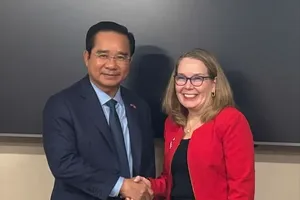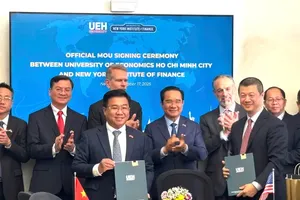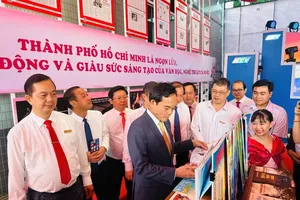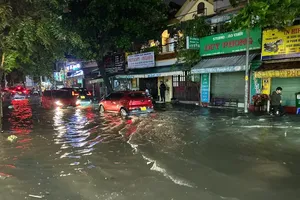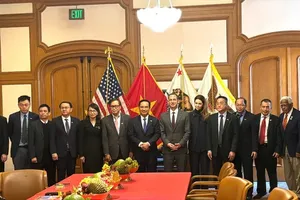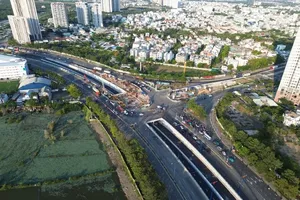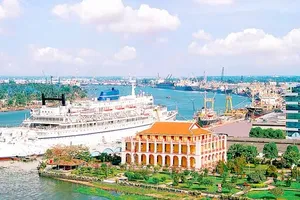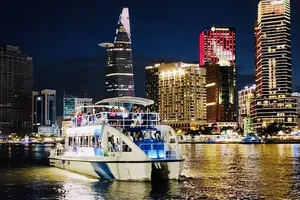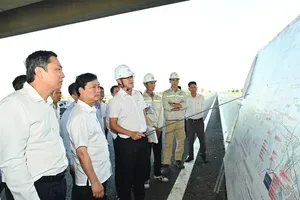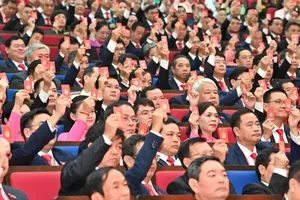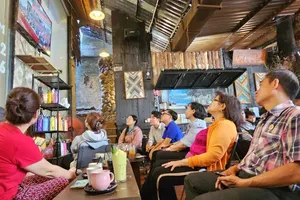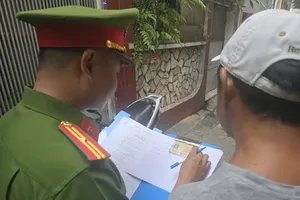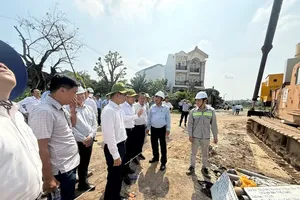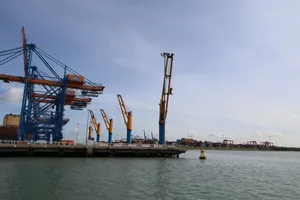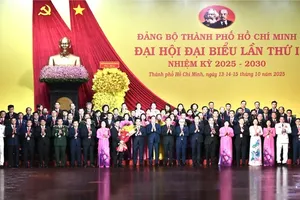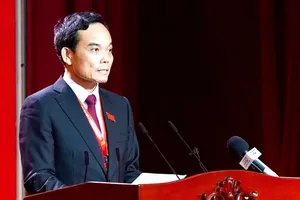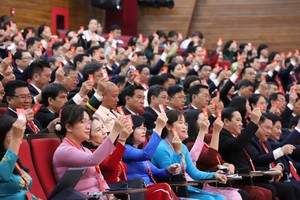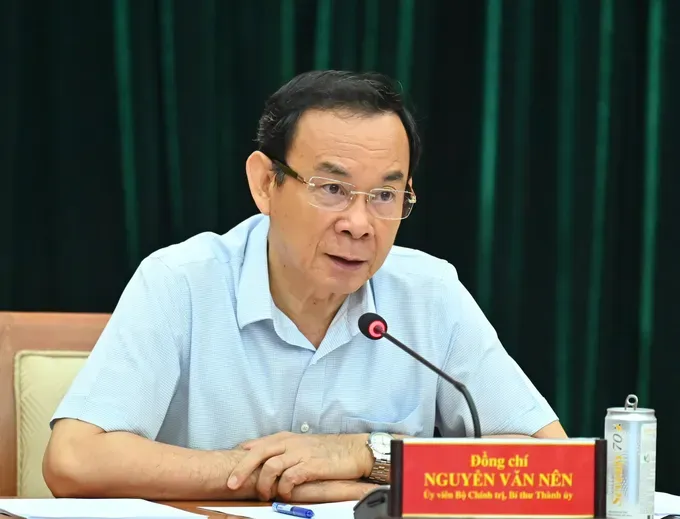
The annoucement was made at the Steering Committee’s first working session.
The Steering Committee is be chaired by Secretary of the Ho Chi Minh City Party Committee, Nguyen Van Nen. Chairman of the Ho Chi Minh City People’s Committee Nguyen Van Duoc has been appointed Permanent Deputy Head of the Steering Committee.
The Deputy Chairpersons include Standing Vice Secretary of the Ho Chi Minh City Party Committee Nguyen Thanh Nghi, Chairwoman of the People’s Council of the city Nguyen Thi Le, and Vice Secretary of the Ho Chi Minh City Party Committee cum Chairman of the Vietnam Fatherland Front Committee in the city Nguyen Phuoc Loc.
The Steering Committee comprises 19 members, including leaders of the Ho Chi Minh City People’s Committee; the Organization Commission, the Inspection Commission, the Propaganda and Mass Mobilization Commission, and the Internal Affairs Commission of the Party Committee; the city’s Inspectorate; and leaders of municipal departments and agencies.
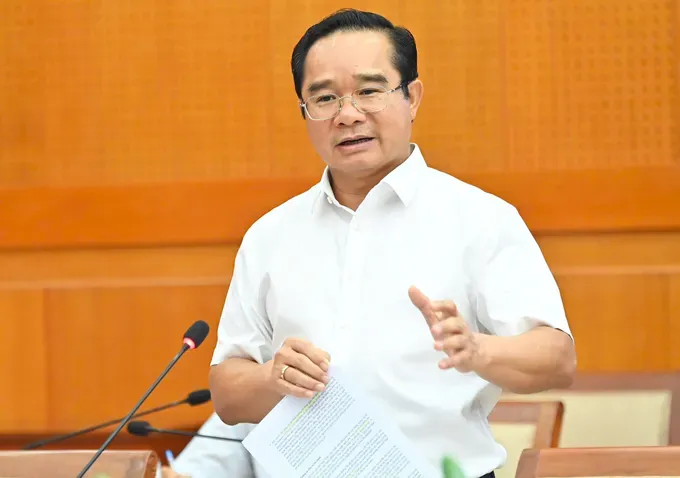
The Steering Committee is tasked with implementing the Politburo's Conclusion No. 49-KL/TW on the development orientation of Vietnam's railway transport to 2030 with a vision towards 2045; Resolution No. 188/2025/QH15 of the National Assembly on piloting several exceptional mechanisms and policies to develop the city's urban railway network; and Resolution No. 24 issued by the Ho Chi Minh City Party Committee on the local implementation of Conclusion No. 49-KL/TW dated February 28, 2023 of the Politburo on the construction and implementation of the high-speed railway investment project on the North-South axis and the country’s key railway projects to 2030 with a vision towards 2045.
The Steering Committee operates under the leadership and direction of the Standing Committee and the Executive Committee of the Ho Chi Minh City Party Committee, with tasks assigned by the Head of the Committee. It operates based on the principle of collective leadership, with the Head of the Committee holding the authority to make implementation decisions. The Department of Construction serves as the Standing Agency of the Steering Committee.
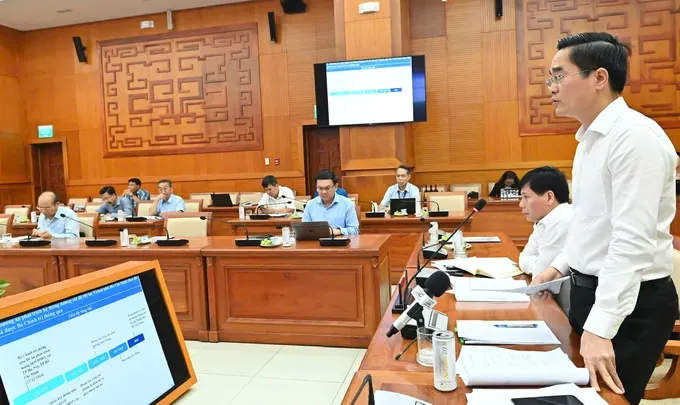
Speaking at the meeting, Chairman of the Ho Chi Minh City People’s Committee, Nguyen Van Duoc, said that in order to achieve the goal of developing the city’s urban railway system, the southern metropolis must update planning routes with a broader vision that strengthens regional connectivity and enables more effective investment measures, restructure the current management board into a more suitable model, such as a company, and seek concrete solutions to ensure that the urban railway development plan not only meets but surpasses its targets.
In addition, groups of special policies need to be examined, including the mobilization of funding sources; investment procedures and the adoption of Transit-Oriented Development (TOD) models; the development of the railway industry, technology transfer, and workforce training; policies on construction materials and waste disposal sites; and collection and utilization of revenue generated within TOD zones.
Ho Chi Minh City also must raise capital through local government bond issuances and the organization of a bidding to select investors using the land to implement urban embellishment and renovation.
The city People’s Committee has been granted the authority to appraise and approve environmental impact assessment reports and to issue environmental permits.
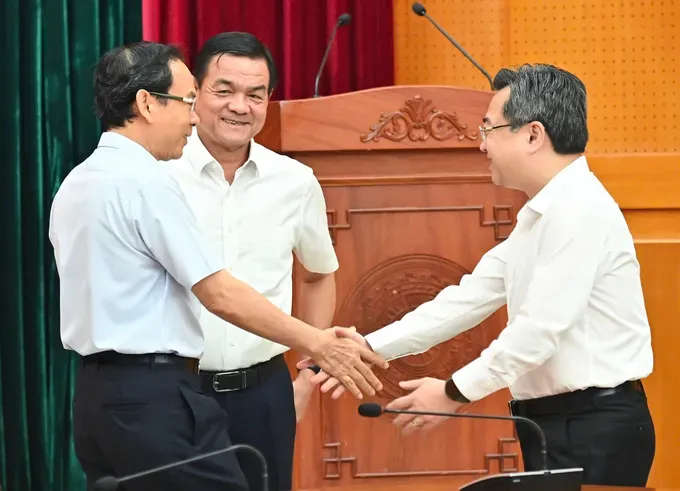
According to the Ho Chi Minh City Department of Construction, in addition to the urban railway lines previously planned under Prime Minister’s Decision No. 568, the department has coordinated with relevant agencies to develop a plan for revising the city’s metro system in alignment with Project No. 49.
Specifically, the new metro lines include Ben Thanh – An Ha, Cu Chi–National Road 22 (Phan Van Khai Street)–An Suong – Ben Thanh – Thu Thiem, Hiep Phuoc – Binh Trieu–Cong Hoa intersection – Tan Kien – An Ha, Dong Thanh – Tan Son Nhat Airport – Ben Thanh – Nguyen Huu Tho–Hiep Phuoc urban area, Long Truong – Hanoi Highway (Vo Nguyen Giap Street)–Saigon Bridge–Bay Hien intersection – Da Phuoc Depot, Inner Ring Road, Tan Kien – Nguyen Van Linh – Thu Thiem–Thao Dien – Thanh Da–Saigon High-Tech Park–Vinhomes Grand Park.
In addition, MAUR is researching and proposing the development of additional metro lines 8, 9, and 10; tram and light rail transit (LRT) systems along the riverside; and the urban development model in a concept of Transit-Oriented Development (TOD) around metro stations. The planning of large surrounding areas near metro stations aims to maximize urban space utilization and develop integrated transportation infrastructure. After receiving approval from the authorities, MAUR will continue to collaborate with relevant units to implement the next steps and provide detailed information on land use in the subsequent phases.
